Linux reports the weather to truckers, travelers
Apr 20, 2007 — by LinuxDevices Staff — from the LinuxDevices Archive — 3 views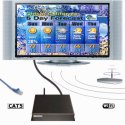 A company specializing in weather reporting has used Linux to build an inexpensive digital sign capable of delivering custom weather channels to truckstops, private airports, marinas, and golf courses. ItWorks's ViziFrame runs Slackware Linux on an x86 processor, and supports TVs or computer displays.
A company specializing in weather reporting has used Linux to build an inexpensive digital sign capable of delivering custom weather channels to truckstops, private airports, marinas, and golf courses. ItWorks's ViziFrame runs Slackware Linux on an x86 processor, and supports TVs or computer displays.
Like other digital signage products based on Linux, the ViziFrame can render multimedia content such as advertising from files stored locally, on internal storage. Alternatively, an Ethernet or optional WiFi interface enables it to render downloaded content. A Windows-based client application can be used to program scheduled content on the device.
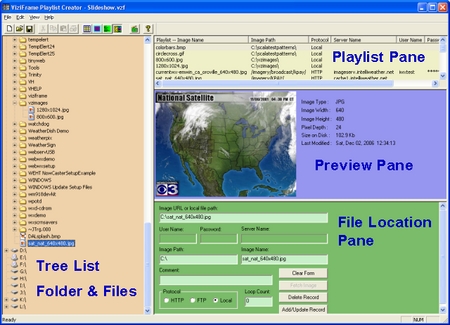
The ViziFrame Playlist creator Windows client
(Click to enlarge)
ViziFrames can be deployed singly, or in groups, with a single point of control. Compared to other network-based signage products, ViziFrame is less complex, more stable, and easier to use and maintain, the company asserts. The devices are designed to restart and resume operation automatically after power failures, for example.
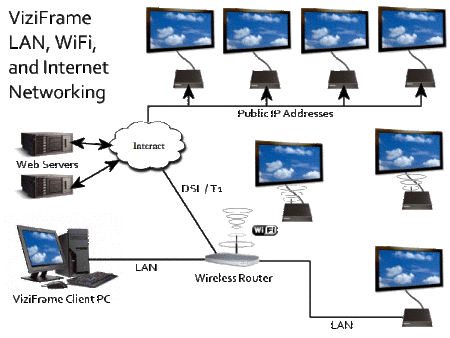
ViziFrame's typical network digital signage architecture
(Click to enlarge)
Every ViziFrame comes with the capability to display some weather data. However, for a $100 set-up fee, ViziFrame users can upgrade to a $30/month weather service offered by ItWorks's sister company, IntelliWeather.
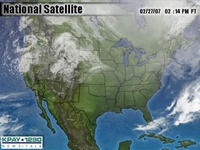
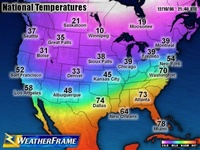
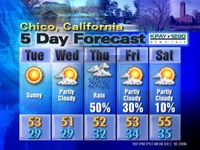
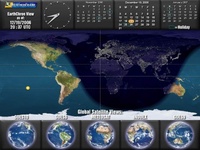
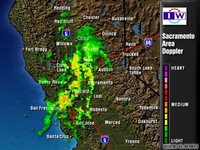
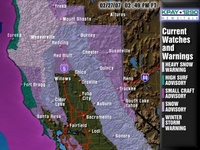
IntelliWeather maps
(Click each image to enlarge)
The IntelliWeather service provides access to a variety of weather maps updated in real time. The service even includes some custom-rendered maps, according to ItWorks and IntelliWeather founder Anthony Watts.
Watts explained, “We have a server farm with a DS3-like network connection that constantly downloads enormous amounts of data from weather satellites. The servers are constantly at work turning numbers into images. We can create a weather map centered over the middle of Kansas, or anywhere else, by merging data from the three nearest radar stations, and overlaying local map data.”
Professionally rendered real-time weather data is especially useful for truckstops, Watts said. “Truckers have to make a 'stay-or-go' decision. They could watch the WeatherChannel, but they would have to wait half-an-hour for the data they need.”
Watts continued, “Our local Dopler maps are updated every 5-7 minutes, depending on the Weather Service schedule. Many of our regional and national maps are updated every half hour. Current conditions from observing stations, such as local airports, are updated hourly. Finally, global satellite images are updated every three hours.”
Watts added, “We're working on a Precipitation Forecast feature that looks like radar, but it's for the next 48 hours. It will roll out in the next couple of weeks.”
What's under the hood?
The ViziFrame is available in three form factors, all based on Via C7 processors. The wall-mount version uses a JetWay mini-ITX board supporting various daughterboards, while the desktop and rack-mount versions use Via EPIA mini-ITX boards.
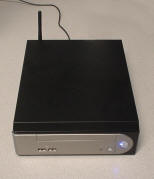
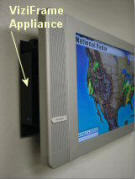

Desktop, wall-mount, and rackmount versions
Watts commented, “The wall-mount version fits between studs, so you can embed it in the wall behind the display. It's pretty benign in terms of heat output, even with the 1.5GHz processor.”
He added, “I've been running one in my garage, where it gets over 100 degrees and near freezing, and have had no problems.”
All ViziFrame models are based on Via C7 processors clocked at 1.5GHz. They have 256MB of RAM, and 512MB of “solid state disk” — probably just a NAND CompactFlash card with an IDE adapter, rather than a more expensive “disk-on-chip” NOR flash device.
Being based on commodity PC boards, the ViziFrame devices offer Via's typically exhaustive range of standard PC I/O. One interesting feature, though, is the capability to support either TV displays, through an S-video out port, or PC displays, through an analog VGA port, or both simultaneously. Digital PC displays and broadcast equipment are supported by DVI daughterboards available only for the wall-mount version.
On the software side, the ViziFrame runs a standards 2.6.18 kernel from Slackware 11. ItWorks's Linux engineer, “Darryl,” chose the distribution in part for its outstanding WiFi support, Watts said. “Most places such as truckstops and airport lounges already have WiFi,” he noted.
The ViziFrame is ItWorks's second Linux-based signage product. Its first-generation effort, “WeatherFrame,” was purchased from a third-party integrator, and had an integrated display. In building its own system, Watts said ItWorks opted for a more flexible commodity PC-based architecture that can be hooked up to any display — or even to cable broadcasting equipment.
Availability
The ViziFrame is available now, priced at $850 with a desktop case, $880 with a wall-mount case, or $1,200 with a 1U Morex 7677 rack-mount case with daughtercard capabilities and two PCI slots. WiFi adds $50.
The IntelliWeather service costs $100 to set up, and $30 per month.
This article was originally published on LinuxDevices.com and has been donated to the open source community by QuinStreet Inc. Please visit LinuxToday.com for up-to-date news and articles about Linux and open source.